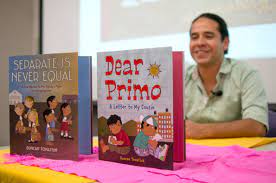Diversity in Literacy
Section 1
Growing up the different cultrual experineces were very few and most of the time when various cultures were implemented in the classroom it was done in Music class from what I can remember. There were times where hispanic culture was celebrated through music and dance. We practiced various dances as a class and it was performed. Children would dress up in traditional clothes as well. In the classroom I don't remember much incoporated into the classroom or lessons. At the time when we were taught the dances in music, I dont remember it being a very positive experince due to the demeanor of the educator. I can remember alot of the students, including myself not really understanding songs and movements to the dances. The teacher had very little patience and looking back, teaching was probably not her calling.
Looking to where my children are currently, I feel that culture is more greatly appreciated now. During the month of October hispanic heritage was greatly celebrated within the school district that my children attended. I feel that there is more of a cultural awareness now than when I went to elementary school. I feel that there are even more options in biligual literacy and books as well. I attended the BMJ zoom where Duncan Tonatiuh shared the book Dear Primo. I felt that this book is great for all ages and cultures because it shares how cultures are alike but different.The link for the video and read along is below.
Section 2
To be a culturally responsive teacher, means that you are creating relationships with students who are ELL's and respecting their culture, beliefs, and traditions. The educator can create a positive relationship with these students by considering the classroom and how it is set up. Many students will come into the classroom and their L1 is not English. Addressing the needs of the students the teacher could have many areas translated in their L1 language. Also, reaching out to the student's family so that the success of the student is met within the classroom. A few examples of what could be incorporated in the classroom are below.




Comments
Post a Comment